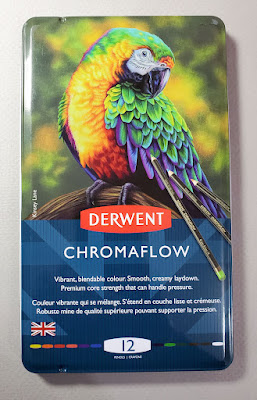 |
| I like the parrot. |
It’s always fun and exciting to open a fresh set of colored
pencils and use them for the first time. I try to adjust my expectations based
on a variety of factors – where they were manufactured, their price, the
maker’s reputation, reviews by others, how they smell, how they look. Sometimes
I have learned an intriguing fact about them – for example, a European
manufacturer is distributing the set only in the US and not within its own
country. How interesting! Bring ‘em on.
Although the basic set of 12 doesn’t include hues I would
choose according to the CMYK-based primary triad I have been experimenting
with, I still like using a primary triad to make initial sketches because it’s
a good test of blending capability.
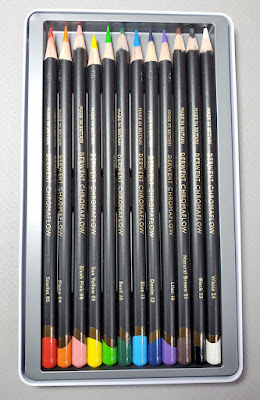 |
| The basic set of 12 colors |
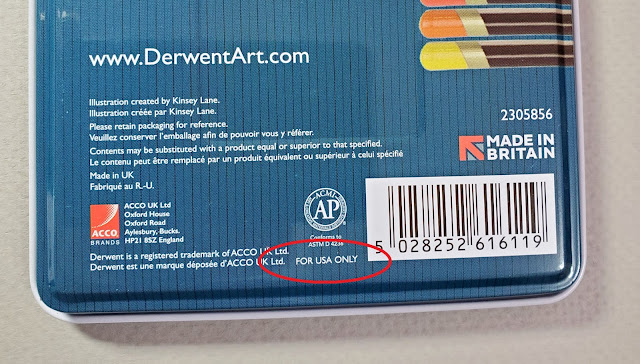 |
| For the USA market only |
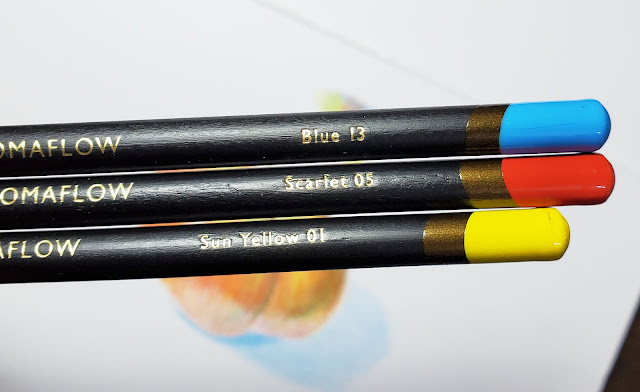 |
| Attractive, asymmetrical end caps that are Derwent's trademark |
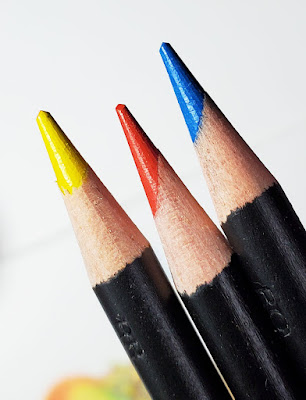 |
| Two out of three of my triad pencils have off-center cores. |
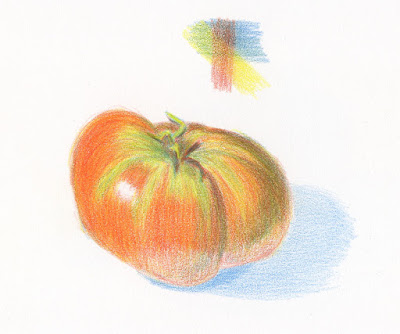 |
| 10/13/21 Derwent Chromaflow pencils in Stillman & Birn Zeta sketchbook |
The new pencils are on the harder side, but as a big fan of Faber-Castell Polychromos, I don’t hold anything against a hard colored pencil if it is
richly pigmented. Unfortunately, these pencils do not seem to be, but I keep
going with my sketch. Using light pressure, I apply a few layers of pigment. I
start to notice that it’s becoming more and more difficult to see that
additional pigment is transferring from pencil to paper. I remain patient as
long as possible, trying to apply more layers. Now I’m getting frustrated, so I
start to press harder, which doesn’t help. I’m using my favorite Stillman
& Birn Zeta sketchbook, whose smooth surface typically takes hard colored
pencils beautifully, but now I’m getting angry because I feel like I’m drawing
on waxed paper.
Three-quarters of an hour later, I stop – I’ve had enough. I
admit, sometimes I enjoy the challenge of fighting with a difficult pencil,
but this wasn’t one of those times. Now you might look at this sketch and
think, “Well, she eked out some decent color there . . . maybe those pencils
aren’t so bad.” But I had to work dang hard to get even what you see there.
That is what it’s like to use a low-quality colored pencil
with low pigment content.
Whoa, Tina – that’s harsh! And this made-in-Britain Chromaflow
set is from Derwent, a highly reputable UK colored pencil maker!
But that’s just it: These are not Crayola or Rose Art
pencils (and they certainly aren’t priced like those kids’ pencils: My set of 12 Chromaflow was $14.99 at Blick). I know that Derwent makes some very fine
colored pencils. In fact, I am currently having a love fest with Derwent’s artist-quality Lightfast line, and I have long appreciated the company’s Drawing Pencil collection for life drawing, so I know they make high quality
products. (Derwent’s low-end Artist and Studio pencils are more in line with
Chromaflow’s quality, and those I do not love.)
That brings up another matter: How many low-end, low-quality
colored pencil lines does one manufacturer need? And now a new one just for the
US market!
I try to find one positive thing to say about any product I
review. In this case, I love the drawing of the parrot on the tin. But I’m
certain it wasn’t made with Chromaflow pencils.
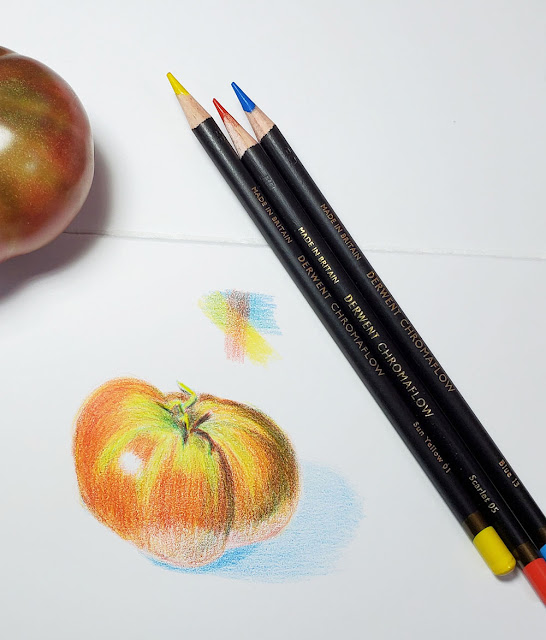 |
| Save your money. |


















































